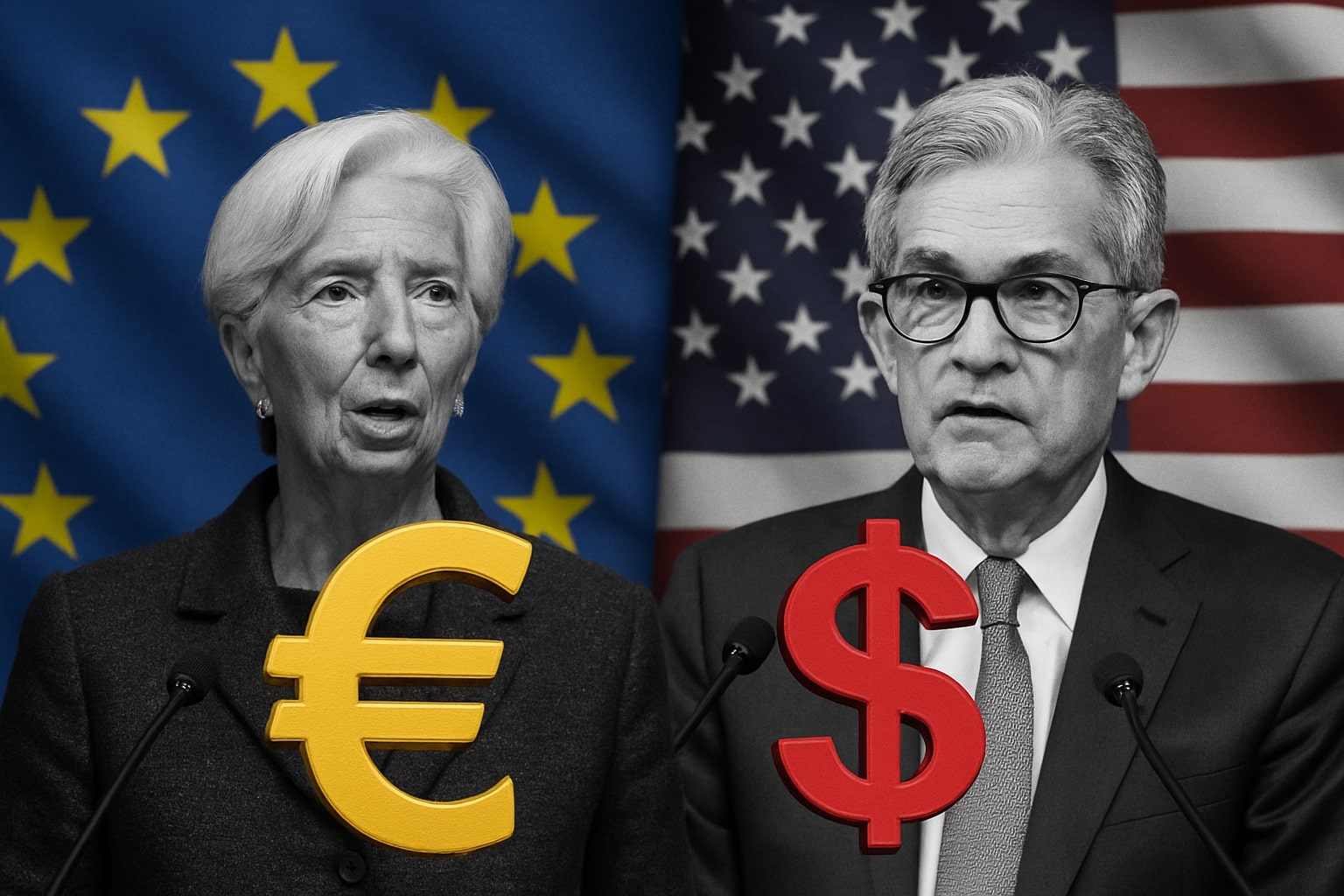
USD/JPY Price Forecast - Yen Hits 155.04 High as Intervention Fears Rise and Fed Signals Boost Dollar
BoJ faces weakening GDP, soft exports, and climbing import inflation while the Fed turns hawkish and USD/JPY targets 155.88–156.88 in the next breakout phase | That's TradingNEWS
USD/JPY Multi-Month Momentum Intensifies As Diverging Monetary Paths Push The Pair Back Toward Intervention Territory
The USD/JPY structure has entered a phase where macro divergence is widening faster than at any point since early 2022. The pair surged to 155.044, the highest level in nine months, before ending the week at 154.52, extending its November gain to 0.34% after the 4.2% jump in October. The market is reacting to a simultaneous combination of factors: fading expectations for a December Fed rate cut, a U.S. government reopening that restored risk appetite temporarily, and the structural inability of the Bank of Japan to raise rates aggressively as economic data softens. Despite verbal warnings from Tokyo, the move has been tolerated as long as the advance remains gradual. The divergence is visible in every timeframe: the U.S. Dollar Index forming a long-term base above 98.55, while Japan’s currency remains pinned under the weight of domestic stagnation and persistent import-price inflation.
USD/JPY Macro Spread Driven By Fed Repricing As December Rate-Cut Expectations Collapse
The re-pricing of the Fed’s trajectory is the core driver behind the latest leg higher in USD/JPY. FedWatch shifted from pricing a 63% chance of a 25 bps cut to just 44%, pulling Treasuries higher and widening the yield spread that has anchored USD/JPY’s rally for two years. As U.S. policymakers signal persistent inflation pressure—especially after tariffs are expected to produce stickier import prices—the probability of further easing is diminishing. The reopening of the U.S. government also restored clarity around incoming macro releases, which traders expect to lean hotter due to supply-side distortions. The lack of CPI and retail sales data last week created an information vacuum, but the market filled that gap with Fed commentary, producing a stronger dollar and a more decisive breakout in USD/JPY.
USD/JPY Sensitivity To Japan’s Fragile Q3 Economy Heightens As Contraction Expectations Collide With Rising Import Costs
Japan’s macro picture continues to provide direct support to USD/JPY upside. Q3 GDP is expected to shrink 0.6% quarter-on-quarter, reversing the previous 0.5% expansion as U.S. tariffs began eroding external demand. With Japan’s trade-to-GDP ratio exceeding 45%, even slight disruptions translate into broad economic drag. Private consumption is forecast to rise just 0.1%, down from 0.4%, showing the combined pressure of household income stagnation and sharply increased import costs due to yen weakness. The result is an environment where the BoJ is disincentivized from hiking aggressively, despite rising inflation risks, because tighter policy would compound domestic economic weakness. The instability in consumption, paired with higher import prices, enhances the structural justification for a weaker yen, keeping USD/JPY elevated.
USD/JPY Tracks Japan’s Trade And Inflation Flows As Weak External Demand Pushes Policy Toward Dovish Bias
Japan’s external data reinforces yen vulnerability. Exports are expected to rise only 1.1% year-on-year, compared to 4.2% previously, while imports are forecast to fall 0.7%, signaling weakening domestic momentum. This cooling of external and internal demand reduces the probability of a December BoJ hike and reinforces expectations that any policy move may be pushed to January 2026, dependent on wage and inflation trends. The inflation report will be decisive: the core-core index is expected to move from 3.0% to 3.1%, fueled largely by rising import costs rather than internal demand strength. This leaves the BoJ in a bind—needing a stronger yen to control imported inflation, but lacking the growth backdrop to justify rate hikes. This contradiction prevents USD/JPY from forming medium-term reversals.
USD/JPY Market Microstructure Defined By Intervention Sensitivity As MoF Signals Caution But Not Panic
Japanese authorities have increased verbal pressure as USD/JPY breaches the 155 zone, but their approach remains reactive, not preemptive. CIBC now projects 156 by year-end, raising its forecast from 148, and stresses that true intervention risk begins at 158, with 160 viewed as the hard cap. The Ministry of Finance has warned against “one-sided” movements, but has not escalated beyond rhetoric, indicating that recent yen weakness is not disorderly. This distinction is crucial because the market knows the MoF typically intervenes only when volatility spikes, not when price simply grinds higher. As long as advances remain systematic and tied to macro fundamentals, the yen is unlikely to trigger emergency action.
Read More
-
XBI ETF Climbs to $114 on Biotech Funding Revival, M&A Acceleration, and Regulatory Tailwinds
16.11.2025 · TradingNEWS ArchiveStocks
-
XRP ETF Momentum Explodes as XRPI Hits $13.30 and XRPR Trades at $18.61 While Bitcoin Slumps to $95K
16.11.2025 · TradingNEWS ArchiveCrypto
-
Natural Gas Price NG=F Breaks to $4.65 on Historic LNG Demand and Winter Shock
16.11.2025 · TradingNEWS ArchiveCommodities
-
GBP/USD Price Forecast - Pound Drops to 1.31743 as Fiscal Turmoil and Delayed US Data Shake Markets
16.11.2025 · TradingNEWS ArchiveForex
USD/JPY Technical Framework Maintains Bullish Continuation Structure With 155–156.88 As The Breakout Zone To Watch
Technical positioning supports trend continuation. USD/JPY continues to trade above both the 50-day and 200-day EMAs, confirming long-term bullish momentum. The pair’s failure to close above 155.044, but its repeated tests of that zone, shows accumulation rather than exhaustion. A break above 155.880, the peak from February 2025, opens a clean path toward 156.884, the next structural resistance. On the downside, 153 remains the first vulnerability; a break below would expose the 50-day EMA and eventually 150, a psychological and historical magnet. The recent candlestick pattern—long upside wicks but firm closes—signals controlled bullish pressure, not overextension.
USD/JPY Fed Data Week Loaded With Volatility Catalysts As Labor Softens And Inflation Risks Resurface
This coming week is one of the most consequential for USD/JPY in Q4. Key U.S. catalysts include ADP employment, delayed CPI, jobless claims rising toward 262k, and the S&P Global Services PMI slipping from 54.8 to 54. Softer labor data paired with lower inflation could challenge the dollar momentarily. However, with tariffs expected to elevate consumer prices and the Fed openly concerned about inflation persistence, the probability of a dovish surprise remains low. FOMC members—including Williams, Logan, Waller, Cook, Kashkari, Barr, Jefferson, and Goolsbee—will shape expectations. Any data strength or hawkish tone from these speakers would accelerate USD/JPY’s climb into the intervention band.
USD/JPY Cross-Pair Signals Reinforce Trend As EUR/JPY Strength Frames Yen As The Weakest Major Currency
A critical signal for USD/JPY’s broader trend comes from EUR/JPY, which continues setting fresh all-time highs near the 180 level. The euro’s dominance against the yen, even as EUR/USD consolidates, confirms that the yen remains the weakest G10 currency regardless of the dollar’s fluctuation. While USD/JPY paused near 155, EUR/JPY blasted higher, showing that the yen’s weakness is structural, not USD-specific. If EUR/JPY pulls back from 180, USD/JPY could ease, but the underlying yen softness will remain intact unless domestic Japanese data surprises sharply to the upside.
USD/JPY Forward Risk Map Centers On 158 And 160 As Intervention Thresholds While Bullish Spread Momentum Dominates
Forward-looking scenarios continue to skew bullish. If U.S. inflation firms and the Fed doubles down on tighter policy language, USD/JPY will test 157, consistent with FXEmpire’s upside scenario. A break of 158 would ignite verbal escalation from Tokyo, but true forced intervention remains more likely near 160 unless volatility surges. On the bearish side, a surprise contraction in U.S. inflation, combined with weak employment and softer PMI data, could drive USD/JPY back toward 150—but would require multiple weak signals at once, making it a low-probability setup under current macro momentum.
Final USD/JPY Verdict After Full Data Integration
Based on the synthesized macro divergence, Japan’s Q3 contraction risk, external demand cooling, import-driven inflation, Fed repricing, technical positioning, and rising probability of a move toward the intervention zone, the overall stance is decisive.
USD/JPY is a BUY.
Upside targets 155.88, 156.88, and potentially 158, with intervention sensitivity increasing beyond that. Downside risk remains controlled unless U.S. inflation sharply undershoots or BoJ signaling turns hawkish unexpectedly



















